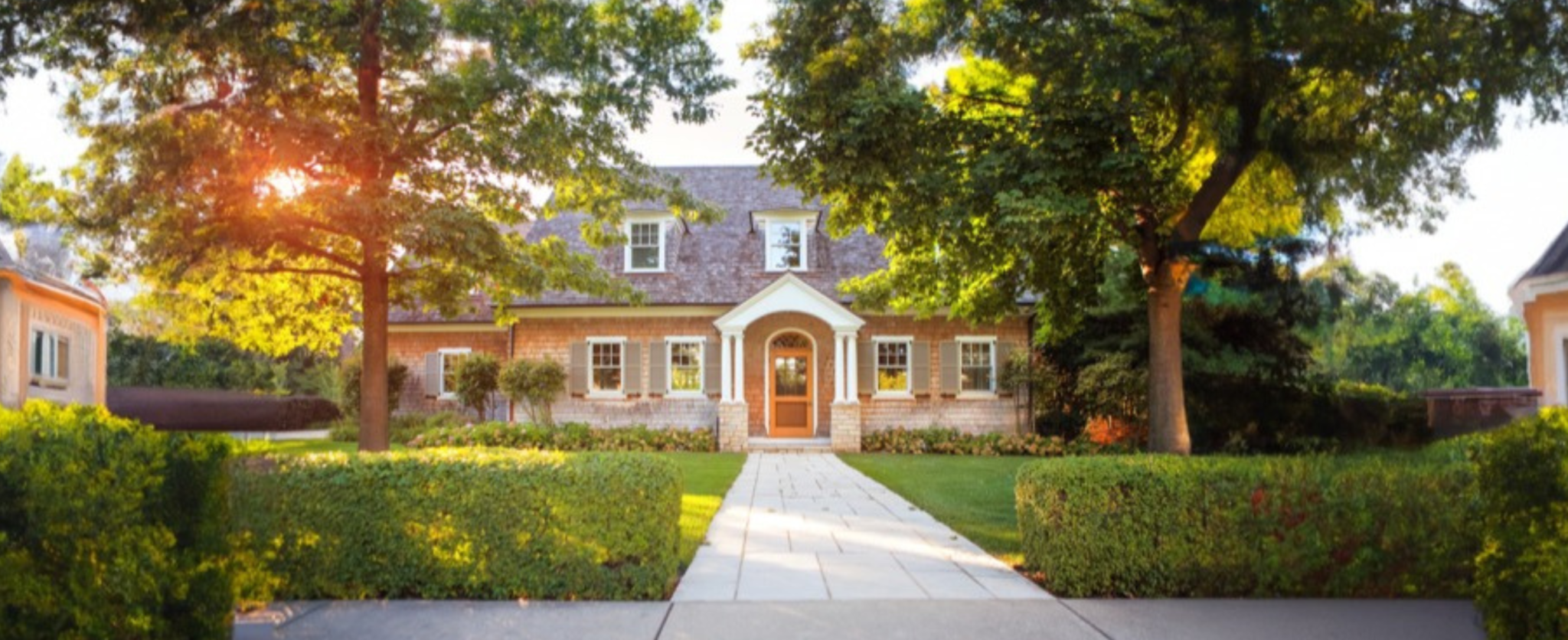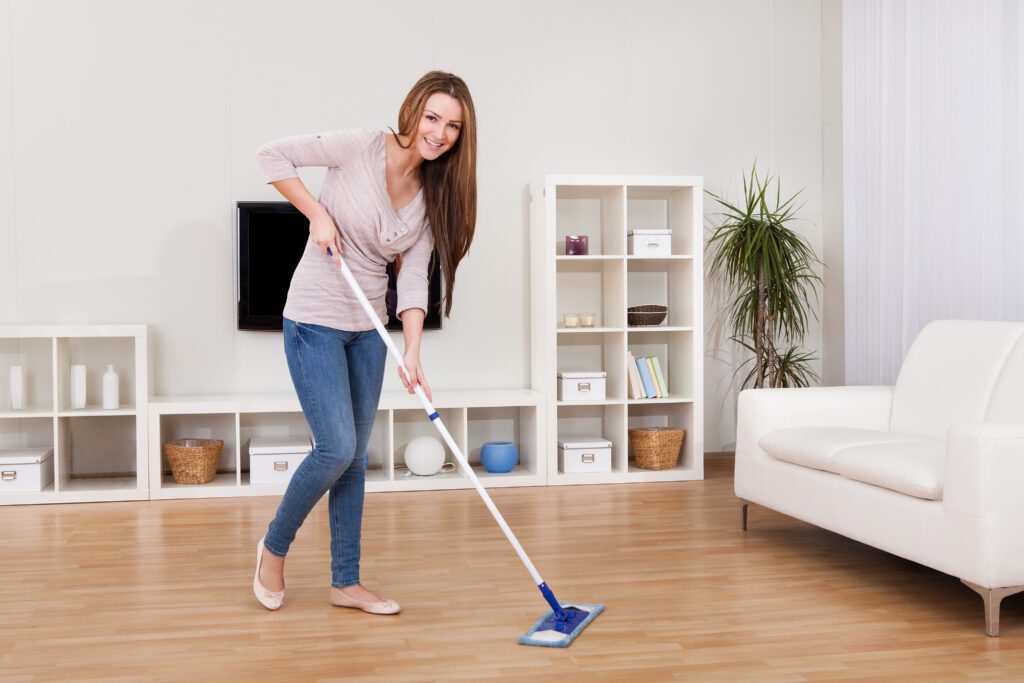Looking for the best way to clean your prefinished hardwood floors? Start by identifying your floor’s finish – surface or penetrating. For surface finishes, use a damp mop with a pH-neutral cleaner, ensuring minimal water use to prevent damage. For penetrating finishes, opt for gentler solutions like mild dish soap or a mix of olive oil and vinegar. Always mop in the direction of the grain and finish by drying with a soft cloth. Regular maintenance with the right techniques will keep your floors looking pristine and extend their life
The Type of Finish You Have Matters!
You either have a Surface or Penetrating finish on your floors? The key difference between a surface finish and a penetrating finish for hardwood floors lies in their interaction with the wood. A surface finish creates a protective layer on the surface of the wood, which serves as a barrier against scratches, spills, and stains. This finish typically includes polyurethane, wax, and UV-cured finishes, all of which sit on top of the wood and form a hard, durable layer.
In contrast, a penetrating finish, as the name suggests, penetrates into the wood fibers and hardens from within. This finish seeps into the wood, soaking deep into the fibers to enhance the wood’s natural texture and color. This type of finish usually includes oils, sealers, and stains, all of which work to bond with the wood and create a natural, organic look.
How do I Determine if I have a Surface or Penetrating Finish?
Determining whether you have a surface or penetrating finish on your hardwood floor can be challenging, as both types of finishes can be difficult to distinguish just by looking at the surface. However, there are several methods you can use to identify the type of finish on your floor.
Firstly, you can conduct a water test. This test involves placing a few drops of water on the surface of the wood and observing how the water behaves. If the water beads up and sits on top of the wood, it likely has a surface finish. In contrast, if the water soaks into the wood and darkens the grain, it may have a penetrating finish. It’s worth noting, however, that this test is not always reliable, as some surface finishes can also allow water to penetrate the wood.
Another way to identify the type of finish is to examine the appearance of the floor. Surface finishes tend to have a glossy or shiny appearance, while penetrating finishes have a more natural, matte look. You can also examine the texture of the wood to see if it has a smooth or rough finish. Surface finishes tend to make the wood feel smoother, while penetrating finishes can leave the wood feeling slightly rougher.
Tools and Materials Required
To clean prefinished hardwood floors, you will need a soft-bristled broom, a microfiber dust mop, a pH-neutral hardwood floor cleaner, a bucket, and a soft, clean cloth. Avoid using abrasive cleaning tools as they can damage the surface of the hardwood. We have a Corgi, and with her comes a lot of dog hair, so we personally have the Dyson V10 Animal Cordless Vacuum, it’s phenomenal and we highly recommend it.
Pro-Tip: Keeping any hardwood floor debris free as much as possible is important to keep your floors looking great for years. Small dirt particles, dust and other debris that is walked on daily will over time diminish the look and finish of the floor as it slowly and invisibly grinds the surface dulling it. If you are like us, daily sweeping or vacuuming is a chore that we simply don’t do consistently enough. So, if you want to make an investment for the long term health of your hardwood floors, get a robot floor cleaner. We personally have the Roomba I4. What we like about this is that is self empties it’s internal dust bin automatically into a separate bag in its docking station after it’s done and docks itself back on it’s charger. We program it to run at every day at 3 AM, so when we wake up in the morning, all of the dog hair and small debris is gone and we have clean floors. It also has an app that makes programming it extremely easy, we highly recommend it.
Pre-Cleaning Preparations
Before starting the cleaning process, remove as much of your furniture as practical and small items from the room. Use a soft-bristled broom to sweep away any loose dirt or debris. Use a microfiber dust mop to pick up any remaining dust or debris. Identify any stains or spills on the floor, as these will require specialized cleaning techniques. If there is no large visible debris, we use our Dyson V10 first, this does a great job at getting all of the small lose dirt up and it’s extremely easy to use, and it makes for a quick job. If you have a Roomba or any other robot vacuum that cleans daily, this step is quick and easy, but we still recommend it, even it the floor may look clean.
Cleaning Techniques: Surface vs Penetrating Finish
To clean a hardwood floor with a surface finish, the process is relatively straightforward due to the protective layer the finish forms over the wood. Execute the pre-cleaning steps noted above, then use a damp mop to clean the floor. Avoid using an excessive amount of water, as it can cause damage to the surface finish. It is recommended to use a hardwood floor cleaner suggested by the manufacturer, or one can mix a mild detergent in warm water. Dip the mop into the cleaning solution, wring it out, and mop the floor in the direction of the grain. Rinse the mop frequently and change the cleaning solution as needed. Finally, it is crucial to dry the floor with a clean, dry cloth to avoid any water damage to the surface of the hardwood floor.
Cleaning a hardwood floor with a penetrating finish, is similar, however, since the penetrating finish does not provide the protective layer present in surface finishes, it’s important to be more selective when choosing a cleaning solution. it’s always a good idea to use a cleaner recommended by the manufacturer if possible. However, If you are so inclined, you can make a solution from ingredients you might have at home, here’s a few suggestions:
-
Mild dish soap and warm water: Mix a few drops of mild dish soap with warm water to make a cleaning solution. This gentle and effective solution can help remove dirt and grime without damaging the wood’s finish.
-
Rubbing alcohol and water: Mix equal parts of rubbing alcohol and water to make a cleaning solution. This solution can help remove tough stains and grime without damaging the wood’s finish.
-
Black tea: Brew several bags of black tea in a gallon of water and let it cool. Dip a soft cloth into the solution and wring it out before using it to clean the floor. The tannins in black tea can help enhance the wood’s natural color and shine.
-
Olive oil and vinegar: Mix 1/4 cup of olive oil with 1/4 cup of white vinegar and 2 cups of warm water to make a cleaning solution. This solution can help restore shine and nourish the wood.
Next, dip a clean, soft cloth into the cleaning solution, wring it out, and wipe the floor in the direction of the grain. you can still use a mop, but make sure its a soft mop as the penetrating finish will provide less protection than a surface finish, then rinse the cloth frequently and change the cleaning solution as needed. Lastly, drying the floor with a clean, dry cloth is crucial, ensuring that no water is left on the surface of the hardwood floor, which can cause damage to the wood.
It is important to note that hardwood floors with a penetrating finish require more frequent cleaning than those with a surface finish. Moreover, acidic cleaners, including un-diluted vinegar, should never be used on hardwood floors as they can damage the finish or even the wood itself.
Post-Cleaning Maintenance
After cleaning, allow the floor to dry entirely before walking on it. Avoid using excessive water when cleaning as this can cause damage to the hardwood especially if they are not a manufactured water proof style. Place rugs or mats in high-traffic areas to prevent scratches and dents and be sure to program your robot floor cleaner (if you have one) to clean daily. Use furniture pads to protect the surface of the hardwood from scratches caused by moving furniture.

